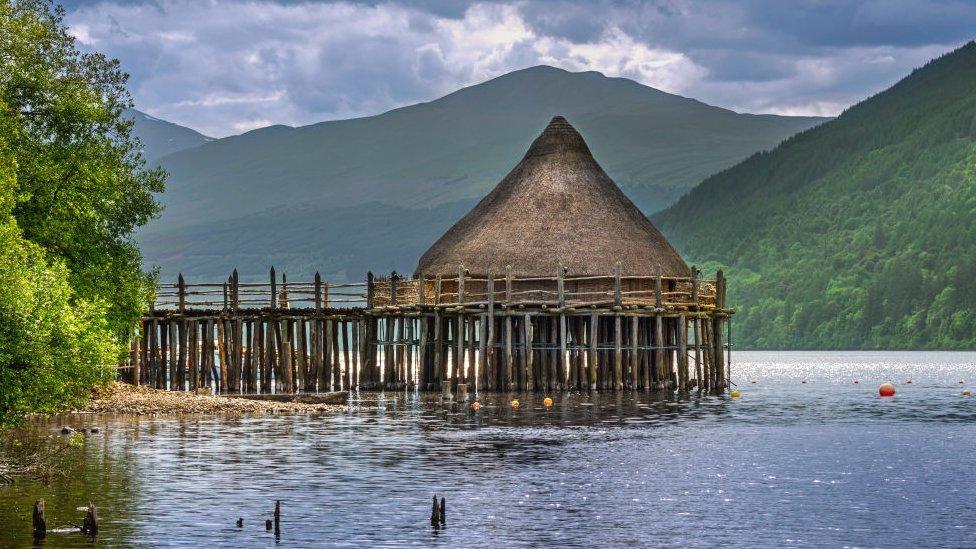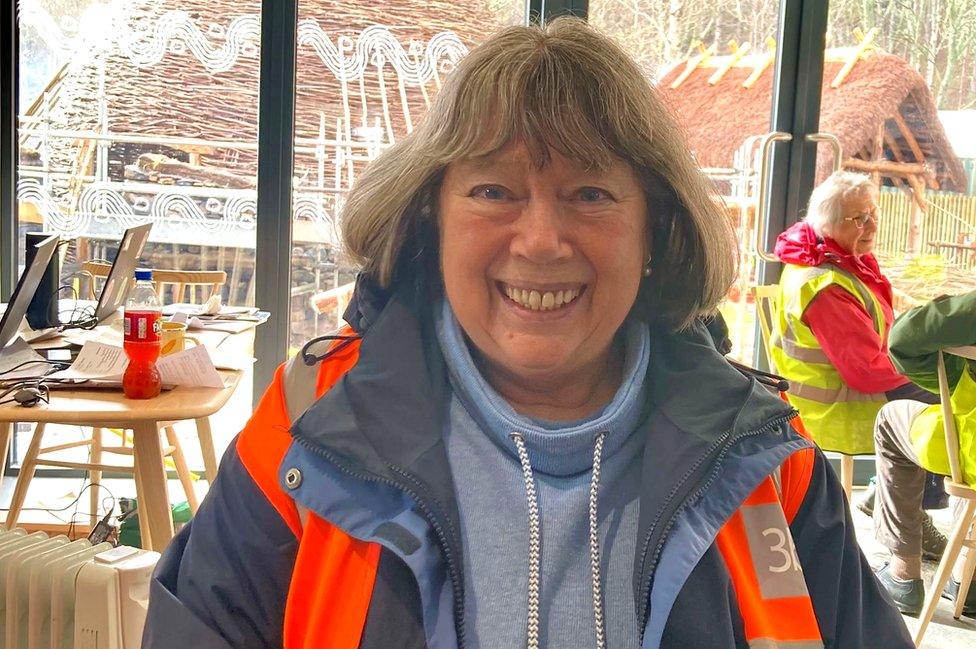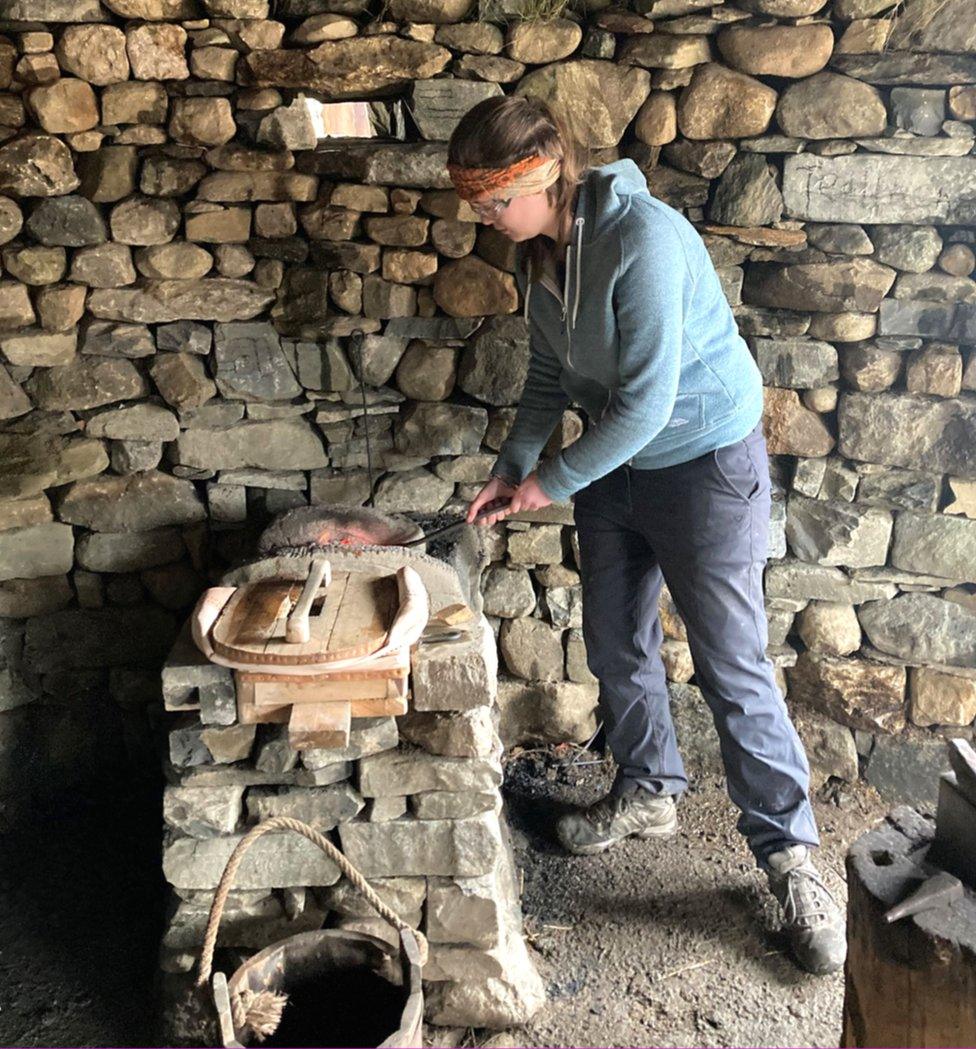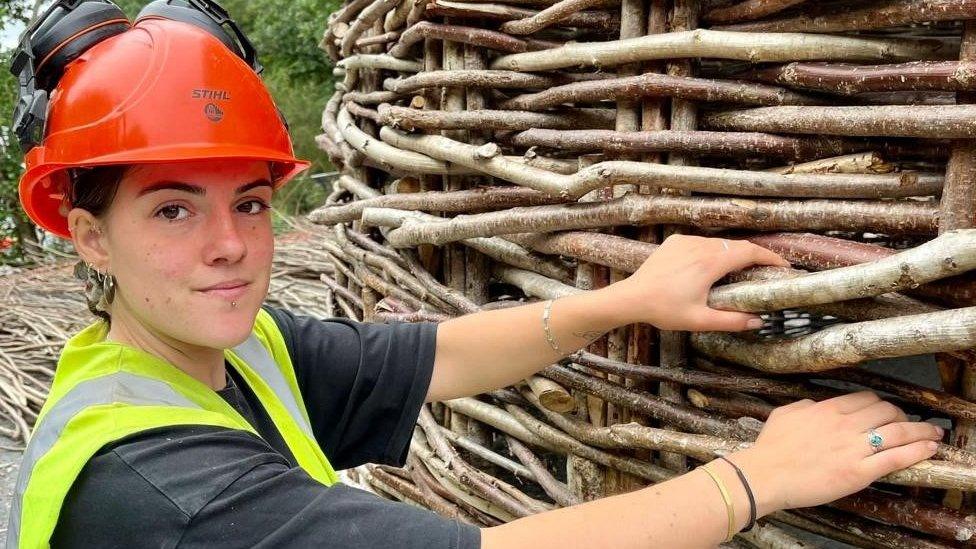Crannog Centre rises from the ashes three years after fire
- Published

The original replica crannog was destroyed by fire in 2021
Rich Hiden's voice was shaking as he spoke to BBC Radio Scotland in June 2021.
Just two days before, the Scottish Crannog Centre on Loch Tay had lost its key artefact, a recreation of an Iron Age dwelling house.
Built by archaeologists 25 years before, it was consumed by fire in just six minutes.
Rich, the centre's operations manager, said at the time: "It's devastating and heart-breaking for all the staff but we will go forward from this.
"The timescale is hard to say. We need to get past these first few days but we will rebuild, and we'll need a thousand hands to help us."
Less than three years on, the Scottish Crannog Centre has risen again from the ashes. The site is 12 times the size of the original, further along the loch side in Dalerb in Perthshire.
The museum collection - which was untouched by the fire - is now housed in a new single storey building, next to a café and bookshop and it all opens out into the main attraction: a living, working Iron Age village.
Staff and volunteers worked against the clock, ahead of the Easter weekend opening but this museum will never be completely finished. That's part of the design.

One of the houses in the new Iron Age village being thatched with locally grown reeds and hazel
"It always will be a work in progress," says Mike Benson, the director of the centre.
"We used local materials like reeds, hazel, turf, heather and stone and that should last a number of years but once they're worn, we'll put them back into the ground and gather new materials which we are already growing across the road from the site.
"That's how we keep the skills alive. That's how we keep the place alive."
Crannog roundhouse blaze: 'It was gone in six minutes'
The plight of the centre caught the imagination of people from around the world.
In the days after the fire, many got in touch to donate money or to offer practical support. Volunteers were back on site within days and the museum continued to operate on a reduced scale.
"I went to the Crannog Centre one morning three years ago to buy a book as a present for someone and walked out a volunteer," says Maureen Kerr.
"It was a total shock to me as I know nothing about the Iron Age."

Maureen Kerr, who came in for a book and came out as a volunteer
Three years later, like everyone else who has worked on this project, she has amassed a huge knowledge of the era. Staff and volunteers are encouraged to try out every skill.
Today blacksmith, Tom Timbrell is showing two staff members how to make cloak pins and belt hooks.
"I'm teaching them how to forge, how to be blacksmiths, but doing this all in an Iron Age setting. So we've got a set of hand pump bellows on an Iron Age forge to recreate items from archaeological finds."
"It's not just making something for the sake of making something. They can keep developing their skills and start making tools that can be used on site by other craftspeople."

Katie Morrison, trying her hand at blacksmithing
That sustainability is important to the Scottish Crannog Centre. And it's what's allowed their £4m project to be up and ready in under three years.
"People talk about crowd funding, but it was more than that," says Mike Benson, who was a steel worker for 28 years before joining the museum sector.
"It was a wave of support, and it gave us momentum. It put the wind in our sails to make this happen."
The one thing missing from the new museum is a crannog. Three thousand years ago, scores of the stilted dwelling houses would have been found on Loch Tay.
"We plan to start building a crannog in May, and visitors can see it in progress," says Mike.
"Eventually, we hope to have three crannogs but I think we've done enough now to let folks come in and see what we've been up to."

And what would the original Iron Age villagers have made of this 21st century community?
"A key question we ask volunteers is what would you like your ancestors to think of you?" says Mike.
"And I think they'd have been chuffed and proud.
They'd probably tell us we got a lot of things wrong but I think we've done them justice."
- Published22 September 2022

- Published19 August 2023
